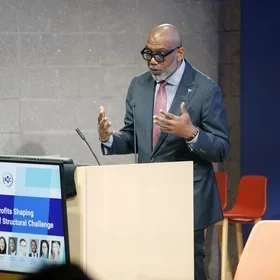By Doug Usher, Advisor to the Political Analytics Program, School of Professional Studies
Since joining the presidential race just a couple of weeks ago, Vice President Kamala Harris has raised an astonishing $310 million, demonstrating tremendous grassroots enthusiasm for her candidacy.
But will it matter? President Joe Biden made headlines early in the cycle by outraising former President Donald Trump—and then Trump reset the narrative earlier this year with a series of eight-figure fundraising events. The most recent haul by Vice President Harris has flipped the script once again.
Our understanding of the impact of campaign money on presidential elections is likely being overtaken by the flood of money that supports both sides. In the last two cycles, both of the major candidates had well over $1 billion to spend. And in both cycles, the candidate that spent less money actually won.
Perhaps more interesting to follow is how these candidates spend their money. Campaigns are investing less in standard television advertising buys, and moving more money into digital spends. This might include pre-roll ads on YouTube and similar services, influencer campaigns, and targeted buys on social media. They are also investing more in voter tracking and data harvesting, designed to better track (and evaluate) how voters are consuming their content and how their behavior may (or may not) change as a result.
Another key question is what candidates expect to get out of their campaign spending. In the past, the “swing voter” dominated, and the goal of campaign spending was to move undecided voters. Today, much more is being invested in activating base voters: those partisans who “swing” between tuning out the election and turning out to vote.
With so much attention on the presidential race, there are also hundreds of other races at the federal and state level that are also raising money at record paces, and making similar decisions that may be even more impactful than spending decisions for high-information races like the top of the ticket.
Analytics plays a key role in how these spending decisions get made, and whether they make a difference at all. To learn more, we hosted a panel on campus titled “How to Spend $20 Billion” as part of our 2024 Political Analytics Conference, hearing from top political professionals whose jobs rely on using data and analytics to make key choices which can mean the difference between winning and losing.
Watch a video recording of the full “How to Spend $20 Billion” panel to hear the analysts’ insights on campaign finance.
About the Program
The Columbia University M.S. in Political Analytics program provides students quantitative skills in an explicitly political context, facilitating crosswalk with nontechnical professionals and decision-makers—and empowers students to become decision-makers themselves.
The 36-credit program is available part-time and full-time, on-campus and online. The fall 2025 application priority deadline for the M.S. in Political Analytics program is February 15. The final deadline is June 1. Learn more about the program here.
For general information and admissions questions, please call 212-854-9666 or email politicalanalytics [[at]] sps [[dot]] columbia [[dot]] edu (politicalanalytics[at]sps[dot]columbia[dot]edu).



